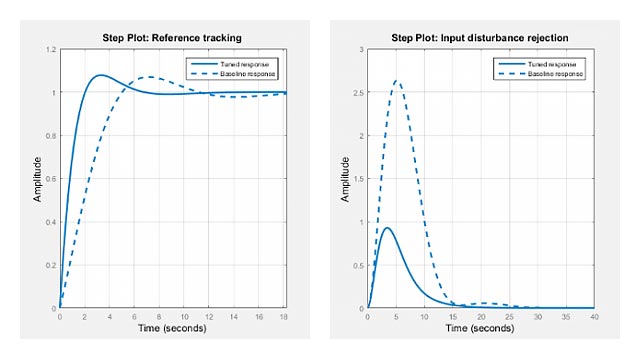piddata2
Access coefficients of parallel-form 2-DOF PID controller
Syntax
Description
[returns the PID gainsKp,Ki,Kd,Tf,b,c] = piddata2(sys)Kp,Ki,Kd, the filter time constantTf, and the setpoint weightsbandcof the parallel-form 2-DOF PID controller represented by the dynamic systemsys.
Ifsysis apid2controller object, then each output argument is the corresponding coefficient insys.
Ifsysis not apid2object, then each output argument is the corresponding coefficient of the parallel-form 2-DOF PID controller that is equivalent tosys.
Ifsysis an array of dynamic systems, then each output argument is an array of the same dimensions assys.
[also returns the sample timeKp,Ki,Kd,Tf,b,c,Ts] = piddata2(sys)Ts. For discrete-timesysthat is not apid2object,piddata2calculates the coefficient values using the defaultForwardEulerdiscrete integrator formula for bothIFormulaandDFormula. See thepid2reference page for more information about discrete integrator formulas.

